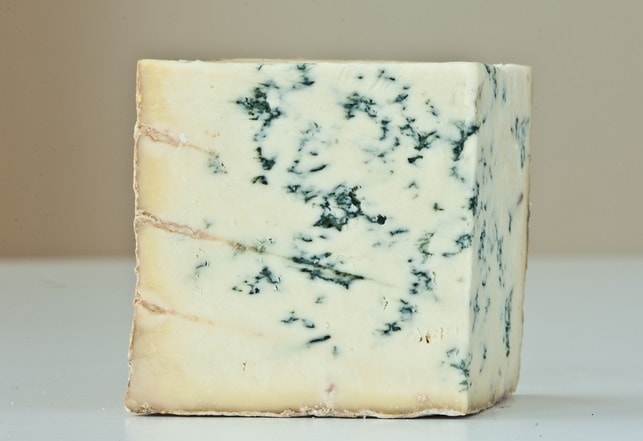
Blue cheeses are characterised by their development of Penicillium requeforti or glaucum. These cheeses can be made with cow’s, ewe’s or goat’s milk.
Blue cheeses can be classified into two groups:
- The strong blue cheeses: Bleu d’Auvergne, Bleu des Causses, Roquefort…
- Mild blue cheeses: Bleu de Gex, Fourmes, Gorgonzola
The first group undergo a mixed coagulation, dominated by lactic ferments, and the other group undergo a mixed coagulation dominated by enzymes.
A thermal treatment can be applied to the milk before the introduction of the bacteria. The key point of the fabrication process of blue cheeses is the development of a lacto and non-lactobacilli flora, this flora can be natural or introduced artificially.
For the strong blues, the milk can be homogenised before the introduction of the Penicillium to avoid an increase in fat. The introduction of Penicillium is generally done before the milk is coagulated, but for some cheeses, the bacteria are introduced when the cheese is in the mould, by being sprinkled with Penicillium. The various bacteria are chosen for different flavours and colouration.
The curdling of the strong blue cheeses is done at between 28°C to 32°C with 30 to 22ml of enzyme for 100 litres of milk, for 1 hour to 1 hour 15 minutes. The curdling of the mild blue cheeses is quicker (30 to 60 minutes), the dose of enzymes is 25 to 60ml for 100 litres of milk, and the temperature is 35 to 40°C.
The draining is done by the cutting of the curds into cubes, then the curds are left to rest in a vat, the put in a cloth to drain for 30 to 90 minutes.
The moulds preserve the cohesion of the curds, without closing up the openings which are needed for the development of the Penicillium. The acidification of the curds is done at 18 to 20°C for 16 to 72 hours, at the same time, the cheeses are turned periodically.
The salting, whether done dry or with the use of brine, permits the cheese to absorb 2.5 to 5% salt into the pate, which hardens the texture and stops it from collapsing.
The maturing process in done in ventilated cellars to allow the passage of air into the interior of the cheeses, so that the Penicillium can develop. These are the only cheeses which mature from the interior to the exterior.
Examples of blue cheeses: Roquefort, Bleu d’Auvergne, Bleu de Causse…
